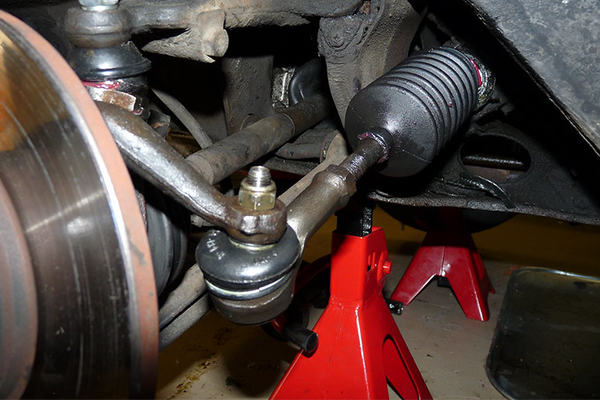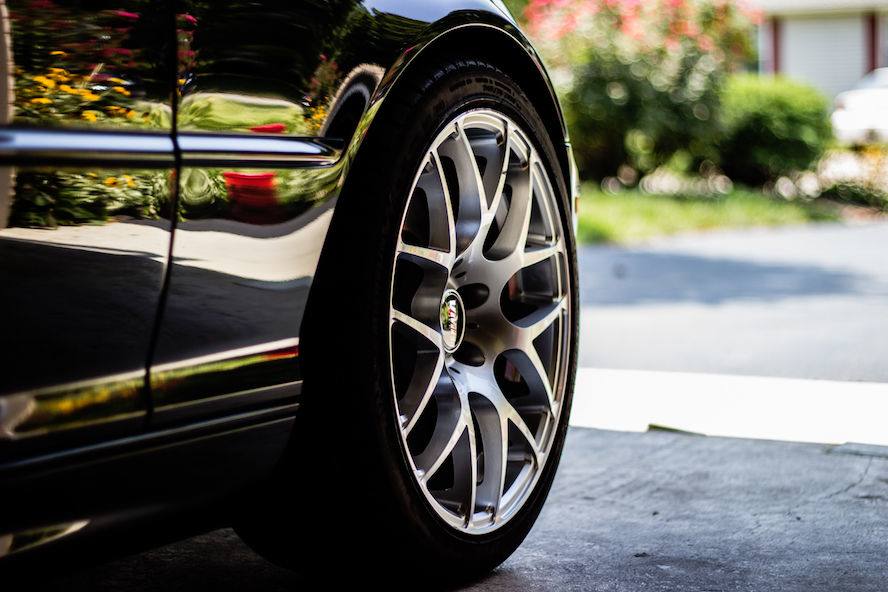
Source | Landon Martin
Steering acting funky? With all the miscellaneous bits connecting the steering wheel to your front tires, it can be confusing to figure out the issue's root cause. How can you tell it's the steering rack, versus something like tie rod ends? Don't hit the dealership for a $1,200 fix; just follow along as we show you quick and easy ways to diagnose steering rack problems.
How a steering rack works
The rack and pinion steering system is what translates left-right steering wheel movement into the left-right movement of the tires to make a vehicle turn. The steering column spins a pinion gear and, as that gear turns, it connects to the gears in the rack, making the rack slide left and right. The “power" part of the steering comes in the form of pressurized fluid in steering rack passages that assist the driver in turning the wheels. The fluid also keeps everything cool and prevents damage in the metal-on-metal gear contact. But, like with any other vehicle system, the steering rack can fail over time.
Why a steering rack fails
Although they're generally a rather hardy part made of steel, it's actually fairly common for a steering rack to fail on an older vehicle. Due to its location, the rack is exposed to both high underhood temperatures and exposed to all kinds of elements beneath the car. Repeated hits from road debris can damage internal bushings and cause a leak. The fluid may become contaminated, allowing abrasive grit into the gears. There's nothing you can do about those first two issues, but preventative maintenance will help a steering rack last longer. Specifically, it's important to change your power steering fluid on time for maximum performance and reliability.
Tools needed to diagnose steering-rack problems:
Power steering fluid (or ATF — read your manual)
Power steering stop leak (optional)
Signs of a failing steering rack
Symptoms vary by vehicle and the way the steering components failed, so not all symptoms will apply. Here's what a failing steering rack can look and feel like, in order of cheapest to most expensive fix.
Low or Discolored Fluid
Most owners manuals remind you to periodically check the power steering fluid, as it can be an early indicator of power steering problems. Remove the reservoir cap and note the level and condition of the fluid. If the vehicle calls for automatic transmission fluid (ATF) then it should be full, red, and clean. If the vehicle calls for normal power steering fluid then it will be light brown or clear. If the fluid level is low, add more until it reaches the full line, and go for a test drive. If the fluid is discolored, water or other contaminants may be trapped in the system, requiring a power-steering flush.
If the fluid is foamy, air could be getting into the system, usually through a cracked hose. There should be two hoses running from the steering rack: a high pressure line feeding it fluid and a low pressure line returning excess fluid to the pump reservoir. Check the low pressure line (it is larger in diameter than the high pressure line), and replace it if you find any damage. Another common symptom of low fluid is resistance to turns at low speeds, a whining noise, or a growl when the wheels are turned all the way to one side.
Leaks
If you find drips of a red or brown fluid under your vehicle, do some troubleshooting, as it might not be the rack. Again, start by checking the power-steering fluid level in the reservoir. Add fluid if it is low. If you notice a power-steering fluid leak, use a flashlight to see exactly where it is coming from. Diagnosing a leak can be tricky—try lying a sheet of cardboard under the vehicle overnight so you can see exactly where it's originating.
Use a shop towel to clean up any existing drips, then have a helper turn the key to ACC and slowly turn the steering wheel back and forth. The pump should force more fluid out the faulty component. If it's a hose, replace it. If a minor leak appears from the rack, try a bottle of power steering stop leak. Major leaks will need a replacement rack.
Wandering steering
For this one, you'll feel like the vehicle needs an alignment—almost as if it's doing you a favor to drive straight, when it really doesn't want to. The sensation is as if you are fighting the wind constantly at highway speeds, making constant trajectory corrections, even if it's a windless day. Fighting a car with excess slop in the steering is an exhausting and dangerous way to drive. Schedule an alignment at your favorite tire center to rule that one out. If the alignment is solid and there's no excessive wear in the tie rod ends, pitman arm, or other components, it's likely the rack.
Burning smell
This one is a little tough, as a burning smell by itself can be caused by nearly any overheating situation. If you have some of the symptoms above, and notice a burning smell from the engine bay, odds are the rack is overheating. This is likely due to lack of power steering fluid, either from a leak, or from a blockage in a hose or internal plumbing. Try a fluid flush.
Dead spot
While driving, you may notice a numb spot while the steering wheel is neutral. This can be as large as “10 and 2" positions on the steering wheel, where, if you turn the wheel, you do not feel any resistance. The steering wheel will feel like it is disconnected from the rest of the car, until you turn it enough and it engages and steers again. This likely means the gears are worn out, and you should replace the unit. This is especially dangerous and is not going to get better on its own!
Grinding noise
This is different from the groaning/whining noise that is commonly heard when the power steering pump is low on fluid. It occurs the same way, when turning corners at low speeds. Grinding is an indication that low or contaminated fluid has damaged the pinion gear and steering rack. If the grinding is severe, the gear and pinion may have slipped out of alignment. This one is serious, so get it checked out quickly. Thuds and clunks are also common with a failing rack, but more intermittent and often difficult to diagnose since they can be caused by many issues, like tie rod ends or tire issues.
Have you experienced steering-rack problems? Tell us about your experience in the comments.







